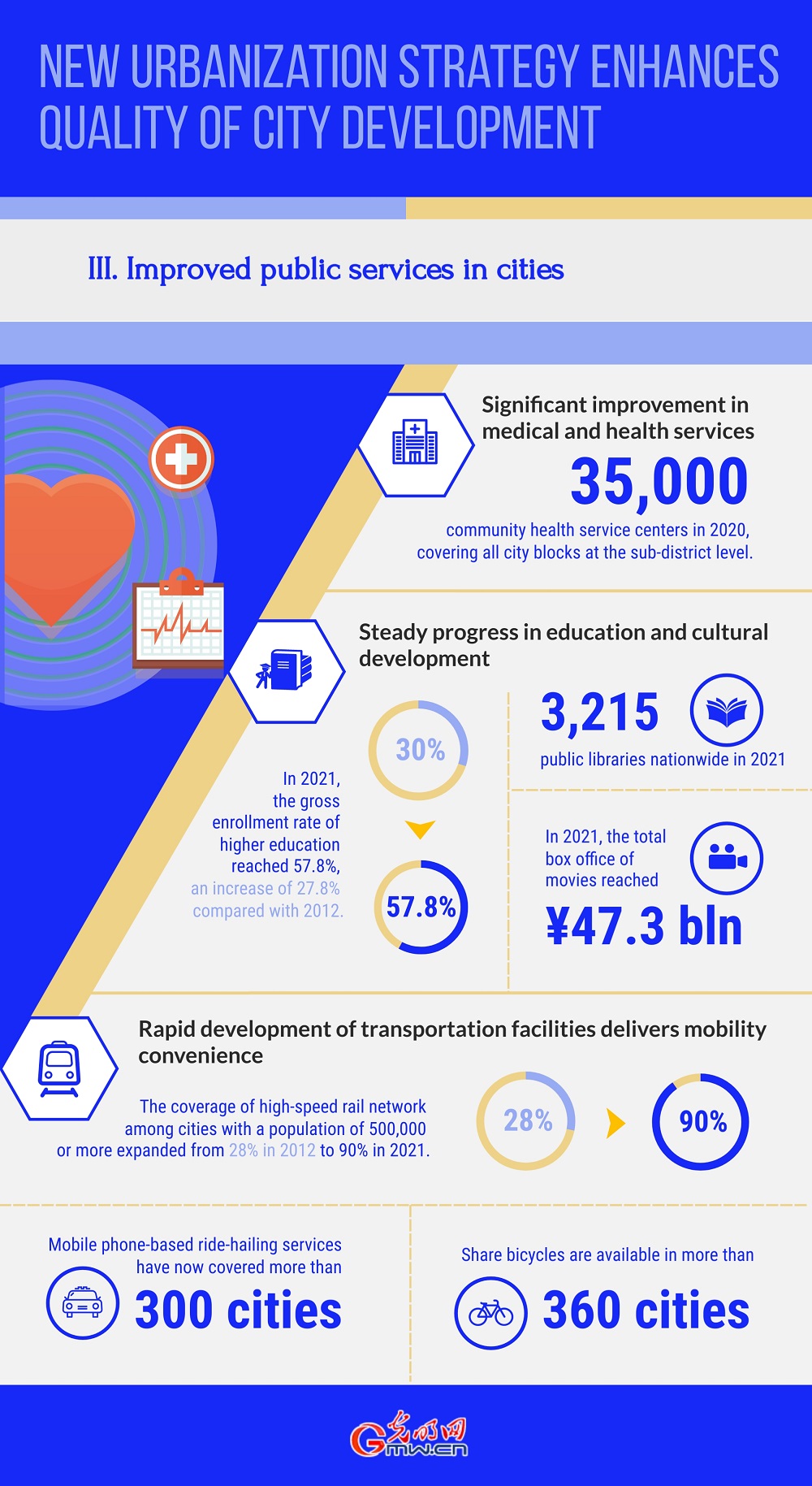

III. Improved public services in cities

1. Significant improvement in medical and health services with a sound social security system
In 2020, medical and health expenditure in cities above prefecture level amounted to 850.3 billion yuan, 2.2 times more than in 2012. Allocation of medical resources became more optimized, in 2020, the number of community health service centers (stations) increased to 35,000, covering all city blocks at the sub-district level.
In 2020, social security and job-insurance expenditures in cities above prefecture level amounted to 1.169 billion yuan, an increase of 149.3% over 2012; housing security expenditures amounted to 339.9 billion yuan, an increase of 117% over 2012; At the end of 2020, the number of urban workers covered by basic pension insurance, basic medical insurance and unemployment insurance in cities above prefecture level reached 237.49 million, 289.72 million and 140.1 million respectively, up 46.2%, 14.1% and 41.6% over 2012.
2. Steady progress in education and cultural development
In 2020, the expenditure on education in cities above prefecture level reached 1.5081 trillion yuan, up 96.2% compared with 2012. In 2021, the gross enrollment rate of higher education reached 57.8%, an increase of 27.8 percentage points compared with 2012.
In 2020, the expenditure on culture, sports and public media in cities above prefectural level reached 185.3 billion yuan, an increase of 109.3% over 2012. As of end 2021, there were 3,215 public libraries nationwide, 139 more than the end of 2012. In 2021, the total box office of movies reached 47.3 billion yuan, and the number of movie-goers in cities reached 1.17 billion.
3. Rapid development of transportation facilities delivers mobility convenience
Urban road construction has seen robust growth in recent years, at the end of 2020, there were 4.37 million kilometers of quality roads in cities above prefecture level, 140,000 kilometers of highways nationwide, and roads in urban areas had covered a total of 7.2 billion square meters of land, up 24.6%, 60.5% and 54.6% over 2012, respectively.
A multi-layered rail transit network is quickly being formed, the coverage of China’s railroad network among cities with a population of 200,000 or more expanded from 94% in 2012 to 99% in 2021, and the coverage of high-speed rail network among cities with a population of 500,000 or more expanded from 28% in 2012 to 90% in 2021.
The coverage of urban rail transit is gradually expanding, too. As of end 2021, there were 275 urban rail transit lines operated in 51 cities, with a total operational mileage of 8,736 km.
Transportation services are becoming more intelligent thanks to the integration of 5G, big data, and artificial intelligence and other emerging technologies. Mobile phone-based ride-hailing services have now covered more than 300 cities and share bicycles are available in more than 360 cities, providing more diversified and personalized mobility services.
点击右上角![]() 微信好友
微信好友
 朋友圈
朋友圈

请使用浏览器分享功能进行分享
